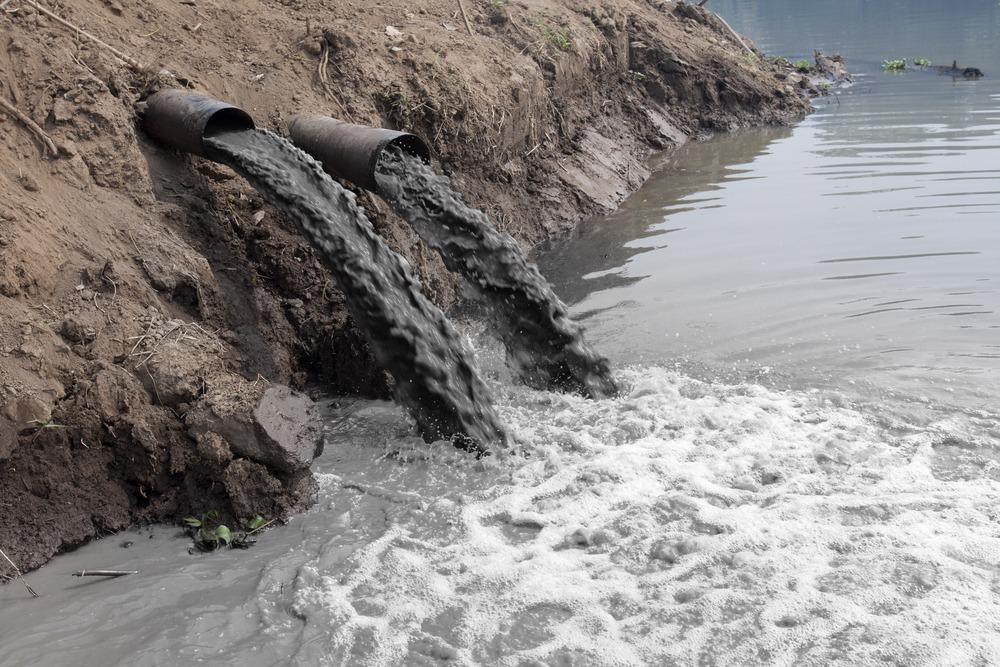Article updated on 17 August 2021
Air pollution claims the lives of roughly seven million people worldwide each year, according to the latest data from the World Health Organization (WHO). Pollution from vehicles contributes significantly to air pollution, and in the US alone, around 22,000 deaths are attributed to transport pollution each year.

Image Credit: Toa55/Shutterstock.com
For many years it has been understood that vehicle exhausts produce significant levels of pollutants, including carbon dioxide. In addition, recent studies have shown that road traffic also produces non-exhaust emissions that are generated from brake wear, tire wear, and the re-suspension of road dust known and tire and road wear particles (TRWP).
Due to their sub-millimetric size and rubber content, TRWPs are considered a type of microplastic. As a result of this classification, research investigating the prevalence of TRWP and its impact on the environment has grown in recent years, as a large body of data demonstrates the detrimental impacts microplastic pollution has on human and environmental health.
The Impact of Tire and Road Wear Particles on Human and Environmental Health
Tire wear pollution accounts for around 11% of all PM10 particles polluting the atmosphere. So far, studies have suggested that the threat of direct impact to human health through inhaling these particles, may be low. However, evidence shows that TRWP may accumulate in the environment over time, entering the food chain, where it can then accumulate in the body.
Environmental monitoring studies have demonstrated that TRWP exists in variable concentrations in river sediments and river water, road dust, road runoff and roadside soils.
However, while the concentrations and dispersal of larger particles are known (ranging from 5 μm to more than 100 μm), the prevalence of smaller TRWP in different environmental locations is generally unknown due to the limitations of the technology currently available to measure such tiny particles.
Gathering evidence of particles less than 5 μm is vital to gaining a deeper understanding of the impact of TRWP pollution, particularly as smaller particles are considered to pose a greater threat to health due to their ability to infiltrate organisms.
Combining Optical Tweezers with Raman Spectroscopy
An international team of researchers across institutions in Italy, Sweden, and France have established a method for trapping and analyzing TWRPs with Raman Tweezers. The new method will likely be fundamental to furthering our knowledge of non-exhaust vehicle emissions and how they impact the environment and human health.
In a pre-print article published in ChemRvix*, the team describes its method that combines optical tweezers together with Raman spectroscopy to capture and chemically analyze TWRPs within a liquid.
The method can measure particles down to the sub-micrometric scale, meaning that scientists now have the means to gather data on the full spectrum of TWRPs, from the large to the sub-micrometric.
In the paper, the team detail how they suspended tire particles in water solutions, optically trapped sub-micron particles in a 2D trapping configuration and acquired the Raman spectrum of individual particles within fractions of a second.
Next, the researchers analyzed samples acquired from a brake test platform. Due to the presence of spectral features other than carbon, the team were able to determine the presence of sub-micrometric agglomerates of rubber and brake debris. The study’s results show that the newly designed system of Raman Tweezers has great potential in the field of environmental pollution analysis.
Raman Tweezers as a Method for Analyzing TRWPs in Water Supplies
The innovative Raman Tweezers proved to be successful in trapping and analyzing TRWPs to the scale of the sub-micrometer. By pushing the tiny TRWPs to the surface of the glass container, the researchers were able to 2D trap the particles in order for them to be analyzed.
The results highlighted properties of the different TPs that will help with future identification and analysis. It was discovered that, when exposed to strong light, a single tire particle induces bubbling and sometimes changes to its crystalline structure.
Additionally, it became clear that carbon particles that become overheated produce thermal gradients within the water, inducing thermophoretic flows of matter, resulting in the concentration of particles around the focal region of the laser, causing a thermophoretic trapping effect.
Finally, the experiments distinguished between different types of particles, including brake wear particles, road particulate matter and tire particles.
Overall, Raman Tweezers could prove to be fundamental in the study of TRWP in water systems, helping scientists understand the nature of TRWP pollution and how it may be entering the food chain.
Raman Tweezers may be used in future research projects that could lead to better regulation and prevention strategies for TRWP, which could help protect human health. Before this can happen, the method will need to be developed further to automate the analytical process.
*Please note, a pre-print study contains preliminary research and has not been peer-reviewed before publication.
References and Further Reading
Air Pollution. The World Health Organization. Available at: https://www.who.int/health-topics/air-pollution
Baensch-Baltruschat, B., Kocher, B., Stock, F. and Reifferscheid, G., 2020. Tyre and road wear particles (TRWP) - A review of generation, properties, emissions, human health risk, ecotoxicity, and fate in the environment. Science of The Total Environment, 733, p.137823. https://www.sciencedirect.com/science/article/pii/S0048969720313358
Gucciardi, p., Raymond, G., Magazzù, A., Callegari, A., Brente Ciriza, D., Antonino, F., Donato, M., Maragò, O., Volpe, G., Lamy de La Chapelle, M. and Lagarde, F., 2021. Raman Tweezers for Tire and Road Wear Micro- and Nanoparticles analysis. https://chemrxiv.org/engage/chemrxiv/article-details/60d98878403d99422cbcd7c3
Disclaimer: The views expressed here are those of the author expressed in their private capacity and do not necessarily represent the views of AZoM.com Limited T/A AZoNetwork the owner and operator of this website. This disclaimer forms part of the Terms and conditions of use of this website.